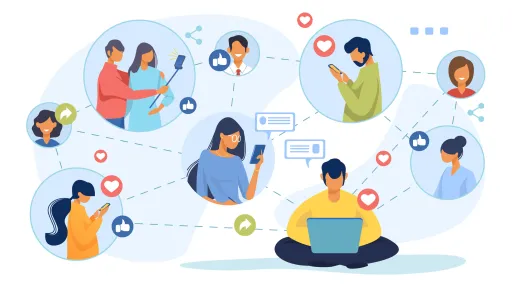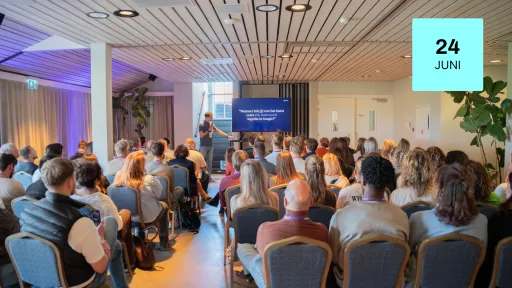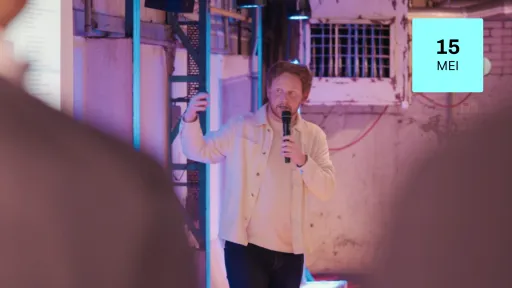In the overwhelming stream of different media that consumers have to process daily nowadays, it is all the more important to find ways to stand out and engage consumers. A powerful strategy that is quickly gaining popularity is building a community on social media. It is not only a trend for 2023, but also a real gamechanger for the success of your business. In this blog post, we will delve into what a community really is, the importance of building a community, and effective approaches for building an online community.
What is a Community?
Before we look at how to effectively build and leverage a community, it is crucial to understand what a community truly is. A community is more than just a group of followers; it is a collection of individuals who share common interests and actively communicate with each other. It's about connecting people who are linked to you, building meaningful relationships, and creating a sense of belonging.
A community consists of:
- A shared space where people can come together and connect.
- People who share a common language, customs, interests, or passions.
- Voluntary sharing and interaction between members.
- A sense of belonging and genuine interest in supporting, helping, sharing, and learning from each other.
Target Audience vs. Community
It is essential to distinguish between a target audience and a community. While your community is part of your target audience, not everyone in your target audience automatically belongs to your community. The main distinction lies in the nature of the relationships and the flow of communication.
A target audience has a one-to-many relationship, where information is usually disseminated in one direction, from the primary voice (brand or creator) to the audience. In contrast, a community involves many-to-many relationships, enabling multidirectional communication between both the primary voice and the members themselves.
For effectively building a community, one can use the ‘network approach’. Here, as a brand, you encourage interaction between members of your target audience. Not only do you ‘broadcast’ information from your brand, but you also facilitate making connections between members of your target audience. When more connections are formed, we speak of a community.
An example of the network approach is the platform Reddit. Here, members can propose topics themselves and seek advice or help from other members, share experiences, and connect with each other.
Why Build a Community?
Building a community offers numerous benefits, but it is essential to understand that these benefits should not only benefit you as a company but also your members. The stronger the mutual connection, the greater the benefits. Here is what you can achieve by building a community:
Increased ‘engagement’: When people feel connected within your community, they are more likely to be engaged and loyal. This sense of belonging promotes higher retention.
Direct access to feedback: A core group of engaged community members can provide valuable feedback and insights, allowing you to improve your products and better tailor your content to your audience.
Community-driven content: Your community can be a source of creative content ideas. You can involve them in content creation, collaborate with them, or amplify their content on your platform, reducing the burden of content generation.
Consumer to creator: Cultivating an engaged social media community is akin to creating a group of brand ambassadors. People who are deeply connected to your brand are more likely to engage with your content, share it, and recommend your product or offering, leading to greater reach, retention, sales, and brand awareness. Moreover, leveraging User Generated Content in your marketing efforts increases trust and results. As much as 55% of consumers prefer User Generated Content over other forms of marketing. An example of a brand that has leveraged User Generated Content for their social media success is the brand Glossier. About 33% on Instagram and as much as 42% on TikTok of their social media posts are User Generated Content. This gives a platform to existing members and builds trust to attract new members.
How to Build a Community on Social Media?
Building a vibrant community on social media requires effort and a clear strategy that provides value to your members. Here are practical steps to achieve this:
Define Your Purpose: Your community should have a purpose that goes beyond self-promotion. It should be something your audience can identify with and rally behind.
Be Authentic and Transparent: Trust is the foundation of any community. Authenticity and transparency help build trust and develop relationships faster. Share behind-the-scenes situations that give your audience a glimpse into your company. This can be done more formally on a platform like LinkedIn, or very informally in Instagram stories, for example. See what fits your company and adjust your strategy accordingly.
Provide Value: Also research your audience's interests. Are there certain questions they have, do they have problems you can answer, etc. Address these questions or issues to provide value to your audience. You can see what is being searched for a lot; what comments are left; or use a question sticker where your audience can directly submit questions. By answering and sharing your knowledge, you provide value to your audience, encouraging them to return.
Elevate Your Members: Celebrate the achievements and contributions of your community members. Share their content or highlight their achievements to strengthen the sense of belonging.
Make Connections: Be involved in your community yourself. Respond to posts, comments, and participate in conversations. Encourage your members to participate and share their thoughts. Also, connect members who share meaningful similarities. This can happen through private chats. Examples include a closed group on Facebook; a subreddit; your own Discord channel; or Instagram's latest addition, 'broadcast channels'. With a broadcast channel, you can invite members to join this special group, where you can share extra content. This can be short updates, behind-the-scenes footage, but you can also ask for feedback using stickers and polls. Additionally, you can share a special code for your most engaged community members. Another way to make connections is by organizing events and gatherings for your community.
Surprise and Delight: Show your appreciation with giveaways, branded items, or special discounts. These gestures not only express gratitude but also encourage members to share your brand.
Conclusion
In summary, building a community on social media is a powerful strategy that can drive brand loyalty, engagement, and success. By fostering meaningful connections among your followers, you can reap the many benefits of a vibrant community. Not sure where to start? Or want to learn more about how to apply social media communities within your current online marketing strategy? Feel free to contact us.




